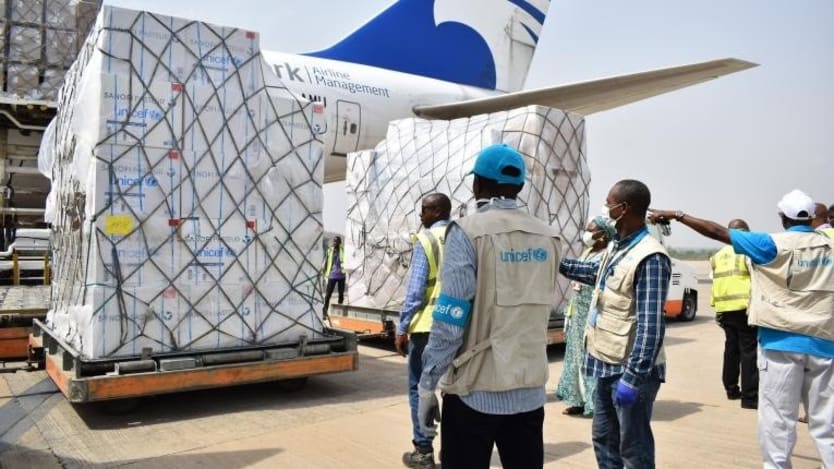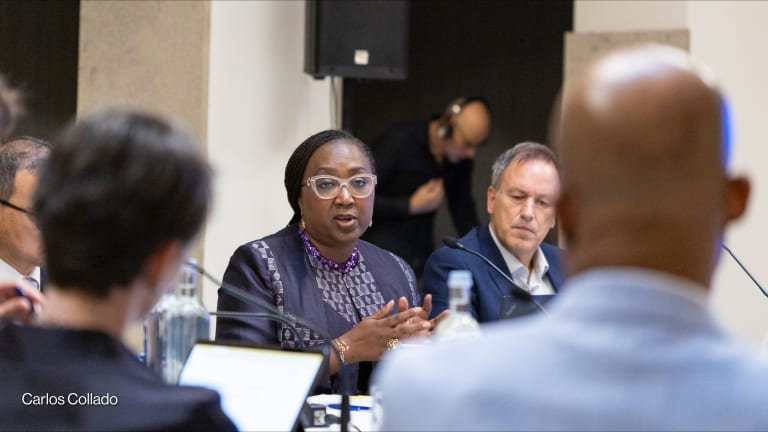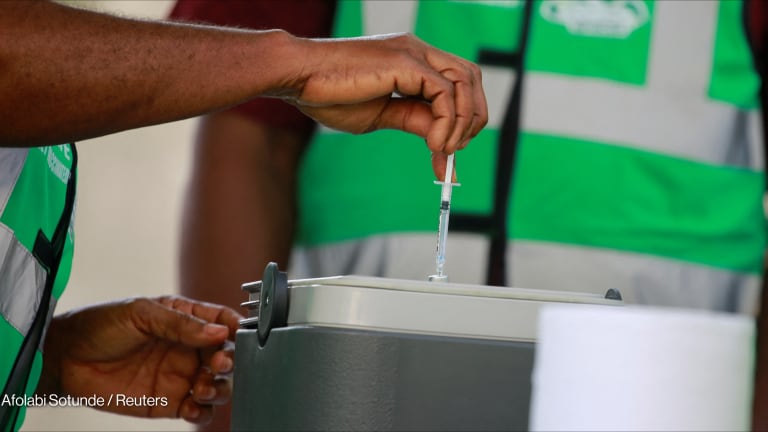
NEW YORK — UNICEF’s ongoing urgent work to help countries prepare for a COVID-19 vaccine is about to become “even more intense,” according to Benjamin Schreiber, deputy chief for UNICEF's global immunization program.
All 92 low- and middle-income countries that are slated to receive vaccines as part of the COVAX Facility will soon release their country-specific COVID-19 deployment vaccination plans. UNICEF, which is partnering with Gavi, the Vaccine Alliance, and the World Health Organization in the monumental task of readying for the deployment of vaccines and vaccine supplies, will want to ensure that countries can carry out their strategies.
“We just need to make sure that they are sound plans, so that they can be executed once the vaccines are there,” Schreiber said in a recent interview. “That’s my main concern at the moment.”
“On the other hand, a lot of countries have had experience with vaccine introductions over the last 10 years, because we've introduced a lot of vaccines. They've set up the teams that have the leadership in place, etc. So I see countries already working on it. They don't wait. Everybody wants to get going,” Schreiber continued.
Making a vaccine accessible: A glossary of terms
From patents to pooling, Devex explains the key terms in the jargon-heavy debate over vaccine access.
UNICEF is working with 350 global airlines and freight providers to facilitate COVID-19 vaccine transport and delivery. The agency announced in October that it is planning to stockpile 520 million syringes in strategically located warehouses — from Copenhagen to Dubai — so it can quickly deliver the items to countries once approved COVID-19 vaccines become available.
The number of syringes, which are designed to lock after a single use, preventing them from being reused on more than one person, would then rise to 1 billion by 2021.
Overcoming new technical challenges
Over the last month, the prospect of having safe, effective, and deliverable vaccines by next year has become more viable, with several companies announcing promising results from their studies. COVAX plans to deliver 2 billion doses of a vaccine by the end of 2021.
But vaccine delivery at such a large and fast-paced scale comes with new technical challenges. For example, will countries have sufficient cold chain capacity, or the ability to properly store vaccines based on requirement?
“Do they have the right number of vehicles to distribute the vaccines? And then in these health facilities, do they actually have the right number of human resources, the vaccinators to organize these immunization sessions?” Schreiber said.
The answers will likely vary country by country, according to Schreiber.
“Donors need to step up to make sure that the COVAX Facility is funded for the procurement of the vaccines, but also that countries have the technical assistance and the resources to really implement what they need.”
— Benjamin Schreiber, deputy chief, global immunization program, UNICEFWhen it comes to cold chain capacity, in particular, countries in South and Southeast Asia, for example, might be “a bit better prepared than a lot of the other countries we work with,” explained UNICEF’s cold chain expert Michelle Seidel.
“Simply because you have got a higher concentration of lower- to middle-income economies there, so you can converge with the private sector more. There is more opportunity for fall-back facilities in those regions,” Seidel said in an interview.
“We have also seen, for instance, a very high priority setting and a focus on cold chain, we have seen at a presidential level the government of Indonesia prioritizing cold-chain preparedness ahead of the vaccine introduction. It seems very positive in the region.”
UNICEF and Gavi have worked with 51 countries to install 40,000 fridges for vaccination over a multiyear plan, stretching back well before the pandemic.
“We look back now and we got to say thanks to God this investment was done. Because if we wouldn't have had that, it would be in a much more difficult situation to accommodate any COVID-19 vaccines,” Schreiber said.
But existing gaps remain: Many of the fridges went to rural areas, bypassing “entry points” at the national and provincial level, said Schreiber, explaining UNICEF’s area of focus in distribution. On-hand cash for vaccine preparedness and misinformation about the safety or efficacy of a vaccine are two other challenges UNICEF and its partners are now facing.
Gavi is providing $150 million for the 92 countries that will receive vaccines as part of their participation in the COVAX Facility. The World Bank has also pledged $12 billion for the roll-out of COVID-19 vaccines, including country readiness, according to Schreiber.
“But all of these are just being rolled out. There's funding opportunities out there. But so far, very little funding has really hit the ground,” Schreiber said. “So what we need to kind of get going on is really to make sure that the funds are in the country, where they are properly utilized for the preparation.”
“Donors need to step up to make sure that the COVAX Facility is funded for the procurement of the vaccines, but also that countries have the technical assistance and the resources to really implement what they need to strengthen the system so they can roll vaccines out quickly,” Schreiber continued.
“So far, there has been hardly any funding going to the country level for preparedness.”
Opportunity for innovation
The unprecedented scale and rapidness of the vaccine delivery process, though, could also produce innovative approaches that could continue to influence vaccination work long after the pandemic ends.
UNICEF is now considering how to provide technical assistance to countries if people will need to quarantine once they enter a country.
“We are also exploring new approaches of how to do that and be more innovative,” Schreiber said.
UNICEF is also working to improve their work in tracking and tracing vaccines. And they are considering electronic immunization cards, which could be accessible through people’s phones.
“Having visibility throughout the whole supply chain is an opportunity to really strengthen that system with this vaccine introduction,” Schreiber said.
“There are opportunities here. This has more attention. People talk about it. People wait for the vaccine. People are very aware and there's potentially a high demand,” Schreiber said.
“The opportunity is also that we can really make sure that we build back better here and to make sure that we not only roll out the COVID-19 vaccines, but also use it as an entry point to strengthen primary health systems.”
Senior Reporter Jenny Lei Ravelo contributed to this story.









